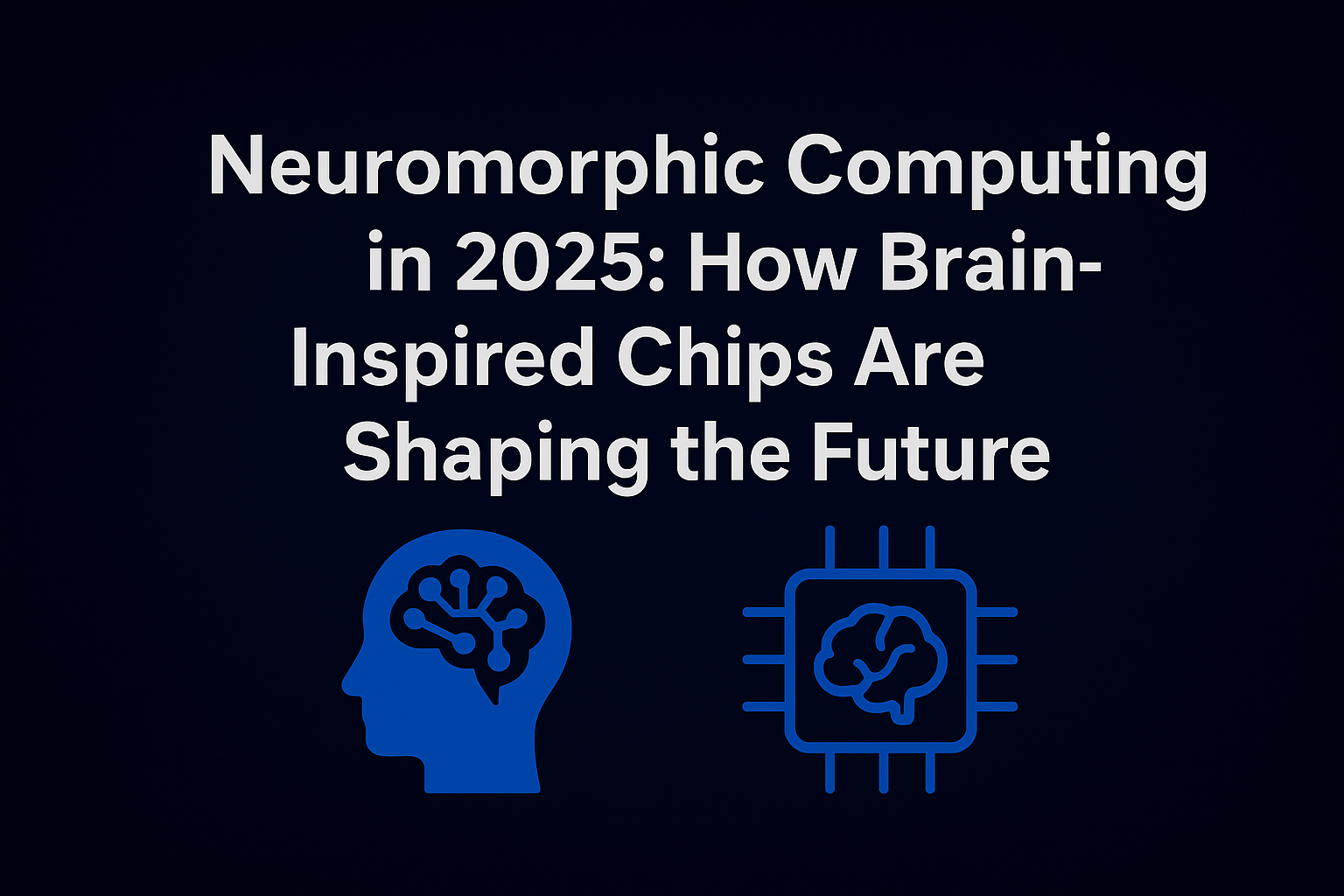Introduction
Artificial Intelligence has come a long way, but traditional computers still struggle with tasks like deep learning and natural decision-making. In 2025, neuromorphic computing — computers designed to mimic the human brain — is changing the game.
Neuromorphic chips are faster, smarter, and much more energy-efficient than traditional processors. This innovation is helping industries across the USA manage AI workloads, robotics, smart devices, and healthcare more efficiently.
What is Neuromorphic Computing?
Neuromorphic computing is a type of computing that imitates how the human brain processes information. Instead of using conventional binary logic, these chips use “neurons” and “synapses” that communicate like brain cells.
👉 Just as digital twin technology creates real-time simulations for industries, neuromorphic systems simulate human thought processes for machines.
Why Neuromorphic Computing Matters in 2025
- Energy Efficiency – Brain-inspired chips consume far less power than GPUs.
- Faster AI Processing – Ideal for robotics, healthcare, and smart cities.
- Edge Computing – Neuromorphic chips bring intelligence to small devices like wearables.
- Scalability – Can handle massive AI models without consuming extreme resources.
(External Source: MIT Technology Review on Neuromorphic Computing)
Key Applications of Neuromorphic Computing
1. Healthcare & Brain Research
Neuromorphic devices can analyze brain scans in real-time, detect neurological disorders, and even assist in brain-computer interfaces.
2. Robotics & Cobots
Robots powered by neuromorphic chips can learn and adapt like humans, making them ideal for manufacturing and collaborative robots (cobots).
👉 This connects with AI SEO trends 2025 — just as SEO adapts to new search behaviors, robots adapt to human behavior.
3. Smart Cities
Traffic lights, energy grids, and surveillance systems powered by neuromorphic computing make cities smarter and more energy-efficient.
👉 This works like energy-efficient computing SEO where performance improves while reducing costs.
4. Wearables & IoT Devices
Smart wearables with neuromorphic chips can process health data instantly, providing users with live feedback without relying on cloud servers.
5. Finance & Real-Time Analytics
Banks and stock exchanges are testing neuromorphic chips for real-time fraud detection and instant trading insights.
👉 Similar to AI keyword research where instant insights guide marketers, neuromorphic analytics guides businesses.
Advantages of Neuromorphic Computing
- Low Power Consumption – Uses 100x less power than GPUs.
- Self-Learning – Chips adapt without retraining.
- Smaller Devices – Brings AI to mobile and wearable devices.
- Closer to Human Thinking – Helps machines reason, not just calculate.
(External Source: Forbes on Neuromorphic Computing)
Challenges of Neuromorphic Computing
- High Development Costs – Designing brain-inspired chips is complex.
- Lack of Standardization – No universal framework exists yet.
- Skill Gaps – Few engineers specialize in neuromorphic design.
- Adoption Barriers – Industries are still testing the technology.
👉 Similar to hurdles in AI keyword research SEO, businesses adopting neuromorphic computing need to overcome skill and cost barriers.
The Future of Neuromorphic Computing (2030 Vision)
By 2030, experts predict:
- Neuromorphic chips will power most edge devices.
- Brain-like AI will enable natural conversations with machines.
- Smart homes and healthcare systems will rely on neuromorphic wearables.
- Robotics will become fully adaptive and self-learning.
(External Source: WSJ on Future Computing)
FAQs About Neuromorphic Computing
Q1: How is neuromorphic computing different from AI today?
Traditional AI runs on GPUs/CPUs, while neuromorphic chips mimic brain functions for faster, energy-efficient processing.
Q2: Which companies are leading neuromorphic computing?
Intel, IBM, and smaller startups in the USA are leading development in 2025.
Q3: Can neuromorphic computing replace traditional computers?
Not entirely, but it will complement them by handling advanced AI tasks more efficiently.
Conclusion
Neuromorphic computing in 2025 represents a paradigm shift in technology. With brain-inspired chips, machines can learn, adapt, and operate with incredible efficiency. From healthcare and robotics to finance and wearables, the applications are limitless.
The future of AI is not just about faster algorithms — it’s about machines that think like humans while using less energy. Neuromorphic computing is the bridge between today’s AI and tomorrow’s true intelligence.
